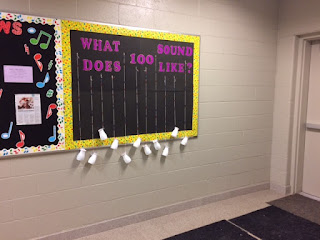A discussion we have all of the time--with each other, with parents, with students--is about learning multiplication facts. "Why don't they know them like we did?"
It is important for them to understand multiplication and how it works. It is important for them to have efficient strategies to help them determine the product of two numbers. It does make future, more complicated math less daunting. We do want them to learn those facts--it is a 3rd grade standard: 3.OA.7:
Fluently multiply and divide within 100, using strategies such as the relationship between multiplication and division (e.g., knowing that 8 × 5 = 40, one knows 40 ÷ 5 = 8) or properties of operations. By the end of Grade 3, know from memory all products of two one-digit numbers.
However, many of our students do not know them. They do not remember them from year to year. They continue to struggle with recall of these facts throughout their schooling.
We need to remember that fluency is not just measured by automaticity. Fluency also includes efficiency, accuracy, and probably most importantly, flexibility. For the purpose of this post, I am mainly focusing on the element of automaticity.
As many of you have heard me say, I do think some of this is the changing of the times. Students do not have a need to use their memory as we did when we were their age--they have so many tools that will remember things for them. When I was a child, I knew all of my friends' phone numbers. People today have no need to memorize their friends' phone numbers. I can't tell you very many of my friends' cell phone numbers today, but I still remember Gena Corbin's phone number from 1978. Our students don't memorize things very often anymore. This is not a skill that is well-developed in them, as it was for us. And--it makes sense. Why memorize things when you can access them in the click of a button?
I think this question also leads into the next reason I believe they don't learn them as we wish they should. They know they don't need to--they'll be able to access them easily as they get older. In their minds, learning these facts has little value.
While we can't change these factors, we can help our students to retain more of these facts. The best way is through use. Games and other activities that ask them to know their facts will help them to remember many of them. Daily usage of facts and discussion/teaching of strategies/Number talks in the classroom will help many of them to make sense of the facts and the patterns found within them.
I had a middle-school teaching friend who shared this with me. I think it puts the accountability of the facts onto the students. First, give each student a multiplication chart.
As they practice facts and find that they know some from memory, they can begin to cross them out.
This will allow them to only see the ones they don't remember from memory, and they won't continue to look back at the ones for which they have demonstrated mastery. It would be a good thing for the class to discuss how the facts that you know can help you to learn facts you are still struggling with. This could be the subject of multiple number talks.
They should be able to better self-assess their knowledge of these facts and will be able to see their growth as their chart becomes darker and darker.
3.OA.7 is a standard that will help our students in the long run. We want them to be successful in them. However, too many of us are putting too much pressure on ourselves to get our students to learn them. Maybe, using this method will put the focus onto our students for mastery.
We make it our goal for them to "master" these facts by the end of their year with us, but in recent trainings, 4th, 5th, and 6th grade teachers all said that students come to them not knowing these facts, so they had to work on teaching them all over again. Each year, teachers send students on thinking that they have mastered these facts...
Only a handful of our students are mastering these facts. Because really--students can access this information in an instant. They don't understand why we think it is important. It is our job to offer students many opportunities to use them, to practice them, to self-assess their knowledge and understanding of them, and to have strategies in place that they can use when they don't remember the product quickly. The stress we are putting on ourselves now to help students gain mastery isn't working (for them or for us).
We need to put the ball in their court. We need to show them how valuable knowing these facts is as the math becomes more difficult. We need to make them the owners of this learning.












